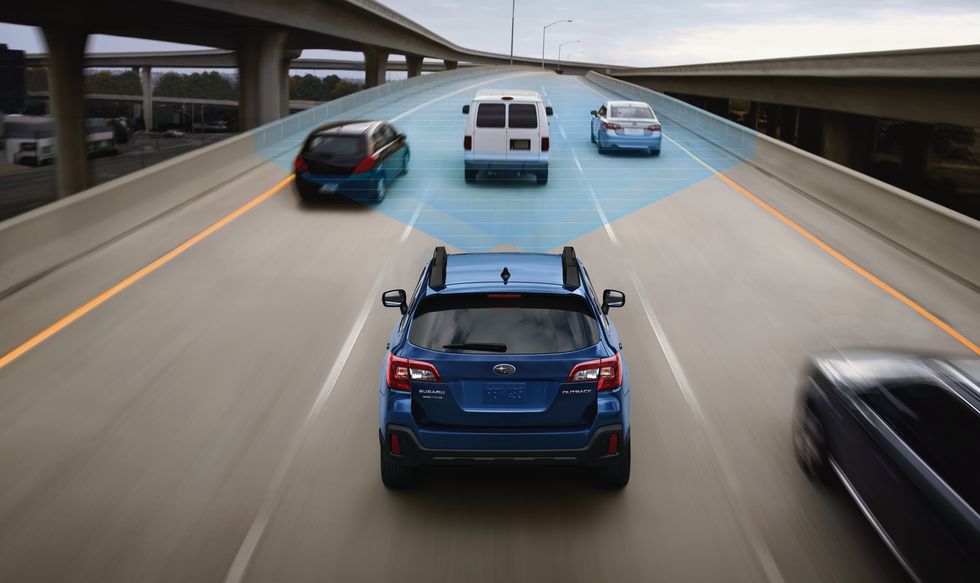- Federal regulators are looking closely at pedestrian safety in relation to cars, but the NHTSA says the criteria for cyclist safety standards don’t exist yet.
- Both pedestrian and cyclist deaths have risen in the last decade, but manufacturers like Subaru are taking a proactive approach to keep all road users safe.
- Analysis by the IIHS shows early versions of Subaru’s EyeSight safety tech accounted for 29% fewer parallel collisions with cyclists, though challenges persist.
Pedestrian safety has been in focus lately, as the National Highway Traffic Safety Administration aims to mandate automatic emergency braking shortly. But it’s not just federal regulators who are standardizing features for a safer roadway, as manufacturers like General Motors move to regiment advanced driver assistance systems across their entire fleet. Amid a sharp rise in pedestrian deaths, these advancements only make sense, but a growing group of road users won’t reap the benefits of these safety developments.
Regardless of stereotyped animosities, cyclists, and drivers are often left to share the same piece of road. This arrangement is rarely advantageous for cyclists, as fatal collisions between cyclists and vehicles have risen 33% since 2010. SUVs are responsible for 55% more cyclist trauma than cars, an Insurance Institute for Highway Safety study found, but one manufacturer is hoping to reverse the course and avoid crashes altogether.
Subaru is notorious for being an adventure-ready brand with loyal customers, but also for emphasizing safety. After all, Subaru has become the quintessential family vehicle, and keeping the whole family safe is a significant part of that. But the Japanese brand’s approach to safety extends beyond those inside the vehicle, thanks to its camera-based EyeSight safety system suite.
Using two cameras mounted near the top of the windshield, Subaru’s EyeSight is claimed to be particularly effective at identifying pedestrians and cyclists in automatic emergency braking situations. The IIHS says these claims are valid, especially considering that EyeSight was one of the earliest crash-avoidance systems capable of preventing bicycle collisions. And the system has been refined recently, as the third generation of EyeSight can detect cyclists moving parallel to and across the vehicle.
Even early versions of EyeSight that only feature parallel identification of bicyclists managed to reduce cyclist-vehicle collisions by 29% compared to other manufacturers. Subaru’s earlier EyeSight systems were able to reduce perpendicular bicycle crashes (which it is not designed to detect) by 5%, though further analysis shows these results as statistically murky. Notably, previous research from the IIHS shows that crossing crashes account for most bicycle accidents in the US and Europe, further emphasizing the need for cross-detection systems.
“It’s promising that these early versions of EyeSight prevented crashes with bicycles traveling parallel to the road, but to have a meaningful impact, AEB systems also need to be able to prevent crashes with bicycles that are crossing in front of the vehicle,” said Jessica Cicchino, vice president of research at the institute and the author of the study.
Though 2022 Subaru Forester and WRX units, as well as 2023 Ascent, Legacy, and Outback models, are equipped with this cross-detection capability, the IIHS says it is too early to tell if these systems are effective. However, future versions of the technology will also need to account for cyclists on dark streets and in tight metropolitan scenarios. Additionally, manufacturers like Volvo and Audi, which both have cyclist detection systems, will likely have their systems tested going forward.
“These technologies are fantastic, but it will be a long time before every vehicle in the fleet is equipped with such a system,” Cicchino said. “That’s why we need things like better roadway lighting to help drivers to see cyclists at night as well as more separated bike lanes and other infrastructure improvements that we know reduce crash risk.”
Has your car ever emergency braked inappropriately for you? Please share your experiences below.
Associate Editor
A New York transplant hailing from the Pacific Northwest, Emmet White has a passion for anything that goes: cars, bicycles, planes, and motorcycles. After learning to ride at 17, Emmet worked in the motorcycle industry before joining Autoweek in 2022. The woes of alternate side parking have kept his fleet moderate, with a 2014 Volkswagen Jetta GLI and a 2003 Honda Nighthawk 750 street parked in his South Brooklyn community.
Read the full article here




